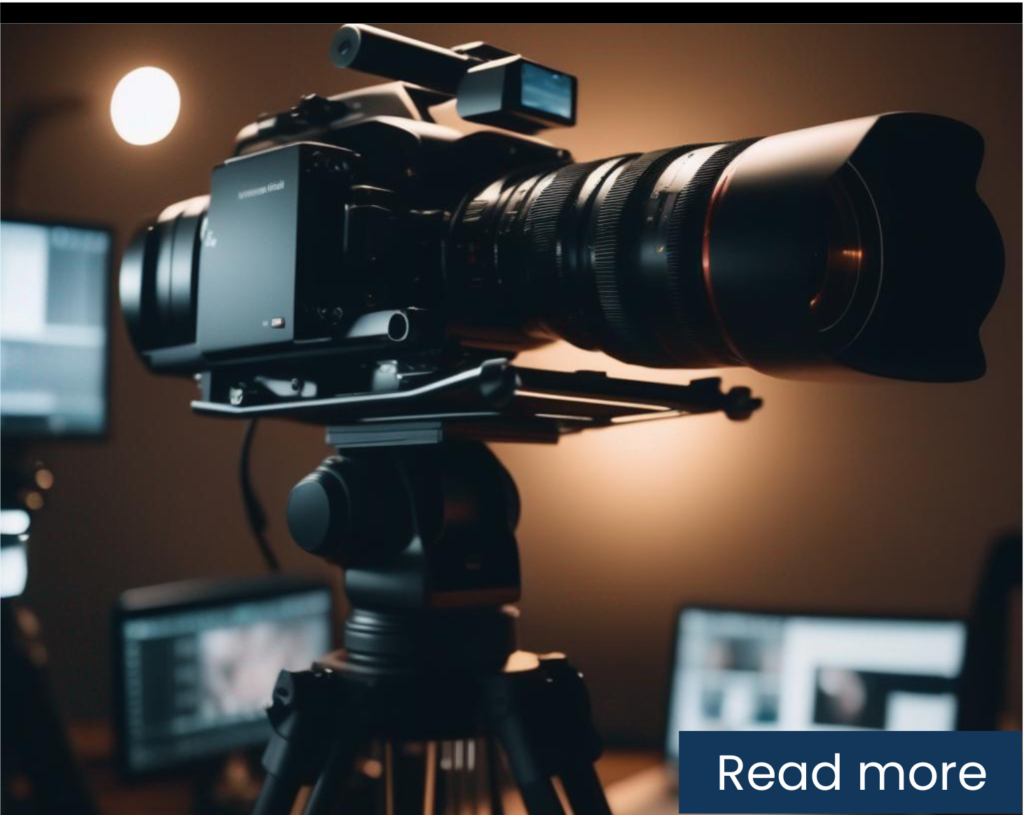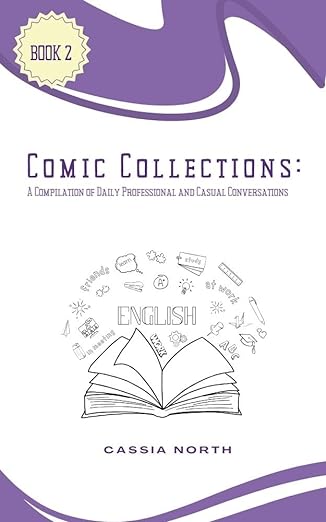
Mental and Emotional Health
"Let's Learn, Explore, and Connect to the World"
Meditation for Anxiety Relief: Step-by-Step Techniques for Beginners
- Patricia Santos
- Mental and Emotional Health
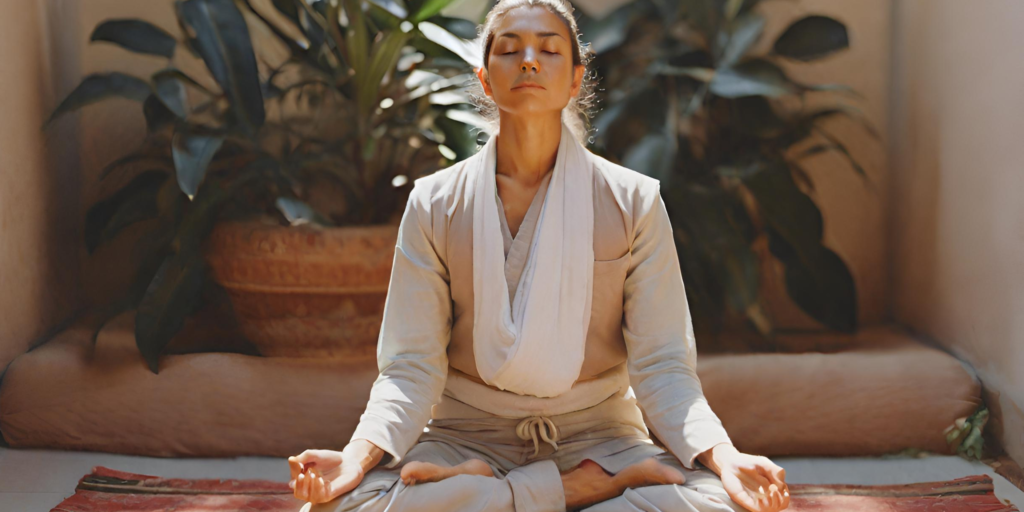
Introduction
 In today’s rapid-paced society, anxiety has become a prevalent issue, impacting the daily lives and overall health of millions of individuals. With the hustle and bustle of modern living, finding calm and maintaining mental balance are more challenging than ever. Amidst numerous therapeutic approaches to manage anxiety, meditation has emerged as a particularly effective tool. Praised for its accessibility and lack of side effects, meditation offers a pathway to peace and resilience against stress.
In today’s rapid-paced society, anxiety has become a prevalent issue, impacting the daily lives and overall health of millions of individuals. With the hustle and bustle of modern living, finding calm and maintaining mental balance are more challenging than ever. Amidst numerous therapeutic approaches to manage anxiety, meditation has emerged as a particularly effective tool. Praised for its accessibility and lack of side effects, meditation offers a pathway to peace and resilience against stress.
Scientific research supports meditation’s benefits, highlighting its ability to reduce symptoms of anxiety by altering the brain’s response to stress. This ancient practice, which once originated in religious and spiritual traditions, has now gained immense popularity worldwide as a secular and therapeutic technique. For those new to meditation, starting can seem daunting due to misconceptions about the practice requiring perfect focus or hours of dedication. However, meditation is flexible and can be adapted to fit any lifestyle or experience level.
 This blog will guide beginners through simple, step-by-step meditation techniques specifically tailored to alleviate anxiety. By demystifying meditation and providing practical advice, we aim to empower you to harness this powerful tool for anxiety relief and improved mental health.
This blog will guide beginners through simple, step-by-step meditation techniques specifically tailored to alleviate anxiety. By demystifying meditation and providing practical advice, we aim to empower you to harness this powerful tool for anxiety relief and improved mental health.
Understanding Anxiety

Anxiety, a natural human response to stress, manifests in various forms, ranging from temporary nervousness to chronic, debilitating disorders. It is marked by sensations of fear, apprehension, and excessive worry, often out of proportion to the actual threat or circumstance. Common symptoms include racing thoughts, increased heart rate, excessive sweating, and an unshakeable feeling of dread. These symptoms can disrupt daily activities, impede performance at work or school, and strain relationships.
The impact of anxiety isn’t just psychological; it has physical facets as well. Chronic anxiety can contribute to numerous health issues, such as heart disease, high blood pressure, and a weakened immune system, complicating the body’s natural ability to fight illness and infection. Over time, without effective management, anxiety can lead to significant health declines and diminished quality of life.

Typically, anxiety disorders are managed using a mix of psychotherapy, medication, or both. Cognitive-behavioral therapy (CBT) is a common approach that helps people manage their anxiety by changing negative thought patterns and behaviors. Additionally, medications like antidepressants and anti-anxiety drugs can help adjust brain chemistry and reduce symptoms. However, these treatments might not be suitable for everyone due to side effects or personal preferences.
In recent years, meditation has emerged as a complementary or alternative treatment for anxiety. It is a non-invasive, cost-effective method that people of all ages can use to cultivate emotional stability and reduce stress. By focusing on the present moment and minimizing the clutter of continuous thought, meditation can significantly lower anxiety levels and enhance overall mental health. As we delve deeper into meditation techniques specifically designed for anxiety relief, it’s important to remember that the simplicity of meditation offers a powerful counterbalance to the complexities of anxiety.
The Basics of Meditation
Meditation is a practice of focusing and quieting the mind, often leading to a state of deep peace and mental clarity. While the roots of meditation trace back to ancient spiritual traditions across various cultures, particularly within Hinduism and Buddhism, its benefits for mental and emotional health have universal appeal, transcending cultural and religious boundaries.
Types of Meditation:

1. Mindfulness Meditation
This involves paying attention to thoughts as they pass through the mind without judgment. Practicing mindfulness encourages one to observe wandering thoughts and emotions objectively, which can help in recognizing patterns that may contribute to anxiety.

2. Focused Attention Meditation
This type focuses on a single point of reference—it could be a sound like a mantra, a visual object, or the sensation of breathing. By directing attention to a particular object, one learns to maintain mental focus, which can help control the meandering anxiety-driven thoughts.
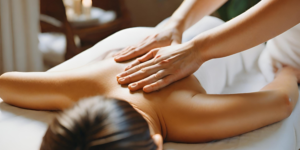
3. Body Scan Meditation
Also known as progressive relaxation, where focus is shifted across different parts of the body to notice and release tension. This method is particularly effective for those who suffer from physical symptoms of anxiety, like muscle tension.
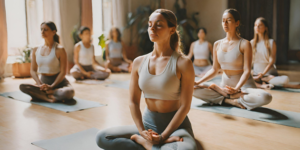
4. Movement Meditation
This could include yoga or walking meditation, where gentle movements help facilitate concentration and flow. It’s especially beneficial for those who find peace in action and wish to incorporate mindfulness into their movement.
Benefits of Meditation for Anxiety
 Meditation reduces anxiety by changing the neural pathways in the brain, enhancing your resilience to stress. It lowers the stress hormone cortisol, improves concentration, and increases self-awareness, all of which play a critical role in managing anxiety symptoms. Over time, regular meditation practice can help diminish the intensity of anxiety attacks, increase emotional flexibility, and enhance overall well-being.
Meditation reduces anxiety by changing the neural pathways in the brain, enhancing your resilience to stress. It lowers the stress hormone cortisol, improves concentration, and increases self-awareness, all of which play a critical role in managing anxiety symptoms. Over time, regular meditation practice can help diminish the intensity of anxiety attacks, increase emotional flexibility, and enhance overall well-being.
Meditation is not a one-size-fits-all solution, and part of its beauty lies in the variety of practices available, allowing individuals to find the style that best suits their lifestyle and preferences. Each form of meditation offers unique benefits, and understanding these can guide beginners in choosing the right path toward managing their anxiety.
Preparing for Meditation
Before diving into meditation techniques, it’s crucial to establish a conducive environment and mindset that will enhance your practice and make it more beneficial, especially when using it as a tool for anxiety relief. Here’s how to prepare effectively:
- Choose the Right Environment:

Find a quiet, comfortable space where you won’t be disturbed. This could be a dedicated corner of your room, a peaceful spot in your garden, or anywhere you feel relaxed. Consistency is crucial; utilizing the same area can train your mind to more readily achieve a meditative state.
- Set Up Your Space:
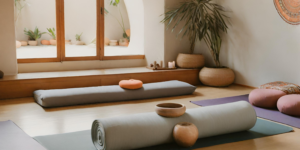
Make your meditation area inviting and calming. You might add cushions or a yoga mat for comfort, perhaps an inspiring image, or a few candles for soft lighting. If you find nature sounds or gentle music soothing, consider playing them in the background. The goal is to create a sensory environment that supports relaxation and focus.
- Choose the Right Time:
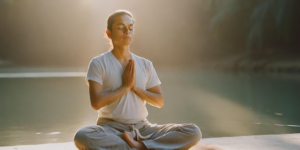
Meditation is most effective when it becomes a regular part of your daily routine. Identify a time when you can be uninterrupted and when your mind is not preoccupied with the immediate demands of your day. For many, early morning or late evening works well, aligning meditation with the natural transitions of the day.
- Dress for Comfort:

Wear comfortable clothing that doesn’t restrict your breathing or circulation. Being physically comfortable is crucial, as discomfort can distract from the meditation experience.
- Set an Intention:

Before beginning, take a moment to set an intention for your meditation session. This could be something as simple as seeking to reduce anxiety, finding calm, or cultivating a greater awareness of the present moment. Setting an intention helps to guide your practice and focuses your mind on a specific outcome.
- Start with a Few Deep Breaths:

Before you begin the actual meditation techniques, take a few deep breaths to transition your mind and body into a state of relaxation. Deep breathing can help reduce tension and bring your focus to the present, making it easier to engage with the meditation practice.
By preparing your environment and mindset, you can create a foundation that supports effective meditation, making each session more fruitful and enjoyable. These steps not only enhance the immediate experience but also contribute to a sustained practice that can significantly alleviate anxiety over time.
Step-by-Step Meditation Techniques
For beginners, learning simple meditation techniques can be a transformative tool for managing anxiety. Below are detailed instructions on several methods that are particularly effective for anxiety relief. Each technique focuses on calming the mind and body, providing a practical approach to meditation that you can incorporate into your daily life.
1. Breathing Meditation:
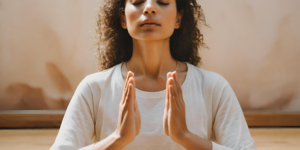
This fundamental meditation practice is particularly effective for grounding and calming the mind quickly and can be performed anywhere at any time.
- Step 1: Find a Comfortable Position. Sit in a quiet and comfortable place. You may choose to sit in a traditional cross-legged position or in any posture that you find comfortable. Keep your back straight to promote clear breathing.
- Step 2: Focus on Your Breath. Close your eyes to block out external distractions. Take a few deep breaths to settle into the space. Then, let your breathing return to a natural rhythm and simply observe the breath as it enters and exits your nostrils.
- Step 3: Count Your Breaths. To help maintain focus, count each exhale until you reach ten, then start back at one. If you find your mind drifting, calmly guide your attention back to your breathing without criticism.
- Step 4: Gradually Increase Duration. Start with a short session (about five minutes), and gradually increase the duration as you feel more comfortable with the practice. Even a few minutes of breathing meditation can significantly reduce anxiety.
2. Mindfulness Meditation:
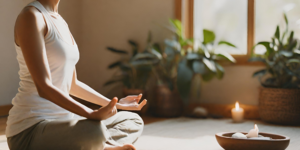
Mindfulness involves staying present and fully engaging with the here and now. It enables you to witness your thoughts and emotions without passing judgment.
- Step 1: Begin in a Seated Position. Find a quiet place to sit comfortably with your feet on the floor and hands on your lap.
- Step 2: Tune into Your Body. Close your eyes and notice any sensations in your body. Feel the weight of your body on the chair or floor and the texture of your clothing against your skin.
- Step 3: Bring Awareness to Your Thoughts. Allow your thoughts to flow freely, observing each one as it arises and falls away. Acknowledge each thought, then return your focus to your breath or a point of focus like a sound or a physical sensation.
- Step 4: Practice Regularly. Mindfulness can be challenging at first, as it’s natural for the mind to wander. Regular practice, even for short periods, can enhance your ability to remain present and decrease anxiety.
3. Body Scan Meditation:
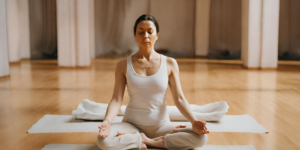
This technique involves mentally scanning your body for areas of tension and consciously relaxing them, an effective way to release physical symptoms of anxiety.
- Step 1: Lie Down Comfortably. Find a quiet place where you can lie flat on your back, legs uncrossed, arms relaxed at your sides, palms facing up.
- Step 2: Focus on Your Breath. Take a few deep breaths to relax, and then return to natural breathing.
- Step 3: Bring Attention to Your Body. Start at the top of your head and slowly move your attention through your body. Notice any areas of tension or discomfort. As you focus on each part, breathe in deeply, imagining tension melting away with each exhale.
- Step 4: Progress Through the Body. Continue scanning all the way down to your toes. Take your time and move slowly, observing how each part of your body feels.
- Step 5: End with a Few Deep Breaths. Once you’ve scanned your entire body, take a few deep breaths and observe the overall sensation of relaxation throughout your body.
Incorporating Meditation into Your Routine:
Consistency is crucial for meditation. Try to meditate at the same time every day to establish a routine that naturally becomes a part of your daily life. Even brief daily sessions can substantially aid in managing anxiety. Remember, the goal of meditation is not to become free of all thoughts but rather to become more aware of your thoughts and feelings without becoming entangled in them. Over time, this practice can help you develop a more peaceful state of mind and a calmer response to the stressors of daily life.
Incorporating Meditation into Daily Life
 Incorporating meditation into your daily schedule is crucial to fully reap its benefits, especially for controlling anxiety. Here are some practical tips for making meditation a consistent and rewarding part of your life:
Incorporating meditation into your daily schedule is crucial to fully reap its benefits, especially for controlling anxiety. Here are some practical tips for making meditation a consistent and rewarding part of your life:
- Start Small:
If you’re new to meditation, it’s important to set manageable goals. Start with just a few minutes daily and slowly extend the time as you get more accustomed to the practice. Even brief periods of meditation can significantly affect your mental health.
- Establish a Routine:
Try to meditate at the same time each day—whether it’s in the morning to start your day with a calm mindset, during a break at work to reset, or in the evening to help unwind before bed. Consistency helps build a habit, making it easier to integrate meditation into your daily life.
- Create a Dedicated Space:
Set aside a particular space in your home for meditation. This doesn’t need to be large—a corner of your bedroom or a quiet space where you can sit undisturbed is perfect. Having a dedicated space can make your practice feel more special and important.
- Use Technology Wisely:
There are many apps and online tools available that provide guided meditations, which can be especially helpful for those new to the practice. Meditations, which can be particularly useful for beginners. These guides can help keep you engaged and teach various techniques that might be more effective for your specific needs.
- Be Patient and Kind to Yourself:
Keep in mind that meditation is a skill that needs to be practiced. Some days, you might find it easier to calm your mind than others. Be patient, and don’t get discouraged by setbacks. The key is to keep coming back to the practice and continue working on developing your ability to focus and relax.
- Reflect on Your Progress:
Keep a journal of your meditation experiences. Noting down your thoughts and feelings after each session can provide insights into what works best for you and show how your ability to manage anxiety improves over time.
By following these steps, you can make meditation a vital part of your lifestyle, enhancing not only your ability to manage anxiety but also improving your overall quality of life.
Conclusion
 Embracing meditation as a tool for anxiety relief can transform your approach to managing stress and enhancing well-being. By understanding different meditation techniques and incorporating them into your daily routine, you empower yourself with a powerful, accessible resource for calming the mind and soothing the body. Remember, the journey of meditation is personal and evolves over time. Consistency and patience are key—allow yourself to grow into the practice at your own pace. Each session provides a deeper understanding of how your mind operates, helping you handle life’s challenges with more ease and resilience.
Embracing meditation as a tool for anxiety relief can transform your approach to managing stress and enhancing well-being. By understanding different meditation techniques and incorporating them into your daily routine, you empower yourself with a powerful, accessible resource for calming the mind and soothing the body. Remember, the journey of meditation is personal and evolves over time. Consistency and patience are key—allow yourself to grow into the practice at your own pace. Each session provides a deeper understanding of how your mind operates, helping you handle life’s challenges with more ease and resilience.
References
- Best Strategies for Relieving Anxiety Quickly. (n.d.). Modern Woman. https://www.heartandstylewoman.com/health-care/best-strategies-for-relieving-anxiety-quickly/
- Unleashing the Potential of Meditation for Anxiety Relief. (n.d.). WellHeal. https://wellheal.app/blog/meditation-for-anxiety/
- Promoting Well-being: 6 Mindfulness Activities for Teens and Kids. (n.d.). CoreLifeMD. https://corelifemd.com/6-mindfulness-activities-for-kids/
Reading comprehension quiz
Check out our books and more!
Comic Collections : A Compilation of Daily Professional and Casual Conversations (Book 2)
Master conversation with ‘Comic Collections’ (Book 2) by Cassia North. A fun, insightful guide to professional and casual communication, packed with engaging comics and practical tips for every interaction!
Check out our Blogs!
Read our everyday blogs and expand your knowledge about English and Video Editing here in SEKAEL.


Learn through Basic English Grammar Blogs by widening your English vocabulary and learning English Grammar.
